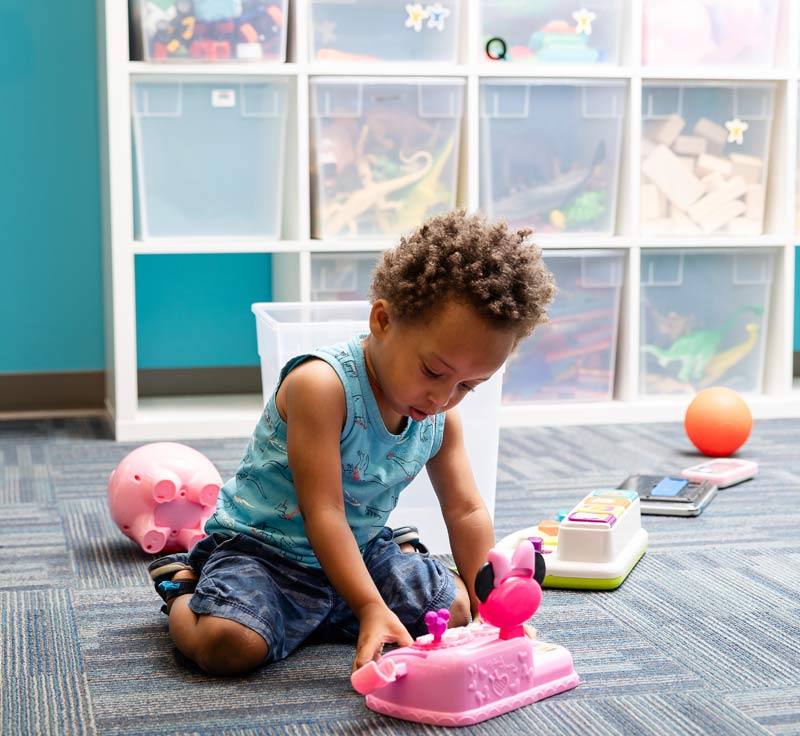Lighthouse Autism Center offers resources to help caregivers recognize the early signs of autism. Here, we delve into some of the most common signs and symptoms in young kids.
Know the Signs of Autism in Babies
When do children show signs of autism? It can be difficult to recognize the early signs of autism in babies, and although autistic children often show signs in infancy, they may not be diagnosed until much later. Early signs of autism in infants or toddlers often go unrecognized simply because parents or caregivers may not know what to look for.
Recognizing the initial signs of autism can lead to an earlier diagnosis, which opens the doors for early autism intervention. Research suggests that early intervention leads to the best outcomes for autistic children and gives them the tools to lead a more independent
Missed Developmental Milestones
Developmental Milestones matter! These milestone markers offer important insight into your child’s development. Detecting missed milestones can be a crucial indicator that leads to an autism spectrum disorder diagnosis in your child. Skills such as smiling for the first time, waving, and verbal communication are just three developmental milestones.
Learn more: https://www.cdc.gov/ncbddd/actearly/milestones/index.html
These are the early signs of autism in babies of 6 months:
- No social smiles or other warm, joyful expressions directed at people
- Limited or no eye contact
These are the early signs of autism in infants of 9 months:
- No sharing of vocal sounds, smiles, or other nonverbal communication
These are the early signs of autism in babies of 12 months:
- No babbling
- No use of gestures to communicate (e.g., pointing, reaching, waving, etc.)
- No response to name when called
These are the early signs of autism in 1-year-olds to 16 months:
- No words
These are the early signs of autism in 2-year-olds and toddlers:
- No meaningful, two-word phrases
- Any loss of any previously acquired speech, babbling, or social skills
Characteristics of Autism Spectrum Disorder
The core signs of autism in toddlers and older children are social communication challenges and repetitive or restrictive behaviors. While young children may display these characteristics on occasion, a child with autism will consistently display these characteristics, and they may interfere with their daily life. Healthcare professionals diagnose autism by assessing behaviors associated with social communication challenges and repetitive or restrictive behaviors.
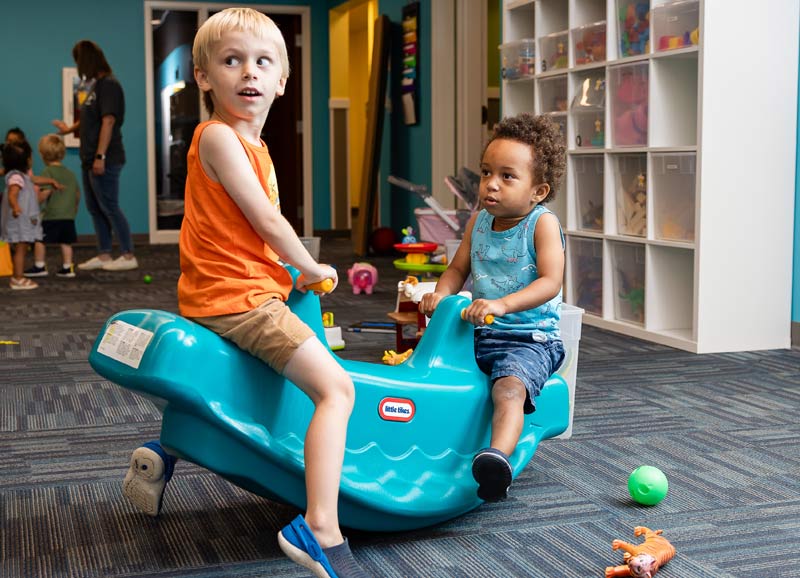
- Little or no eye contact
- Resists being comforted, held, or touched
- Lacks an understanding of personal space (e.g., gets too close when speaking)
- Responds to social interactions, but does not initiate them
- Does not generally share observations or experiences with others
- Difficulty understanding jokes, figures of speech or sarcasm
- Difficulty reading facial expressions and body language
- Difficulty understanding the rules of conversation (e.g., makes spontaneous comments, disconnected remarks, or interrupts)
- Difficulty understanding group interactions
- Aversion to answering questions about themselves
- Makes honest, but inappropriate, observations
- Seems unable to understand another’s feelings
- Prefers to be alone or aloft, or is overly friendly
- Difficulty making friends or maintaining friendships
- Finds it easier to socialize with people who are older or younger, rather than peers of their age
- Disengaged with surrounding activity or people
- Talks excessively about one or two topics (e.g., dinosaurs, movies, etc.)
- Overly trusting or unable to read motives or intentions
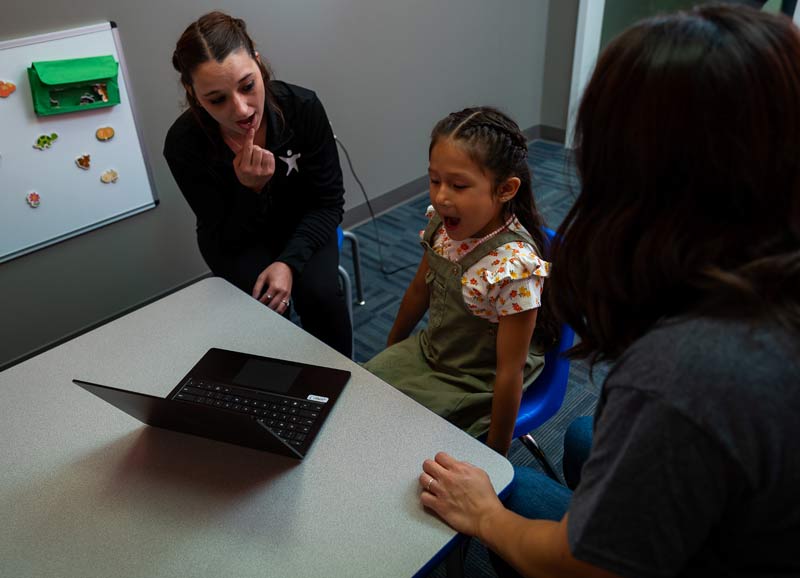
- Abnormal use of pitch, intonation, rhythm, or stress while speaking (e.g., using a singsong or robotic voice)
- Speaks abnormally loud or quiet
- Has difficulty whispering
- Repeats last words or phrases several times or answers questions by repeating the question
- Makes verbal sounds while listening (echolalia)
- Often uses short, incomplete sentences
- Pronouns are often inappropriately used (e.g., using “I” instead of “you”)
- May have an expansive vocabulary
- Uses a person’s name excessively when speaking to him or her (e.g., “Mary, we’re having lunch. Right, Mary?”)
- Speech started early and then stopped for a period
- Difficulty understanding directional terms, such as front, back, before or after
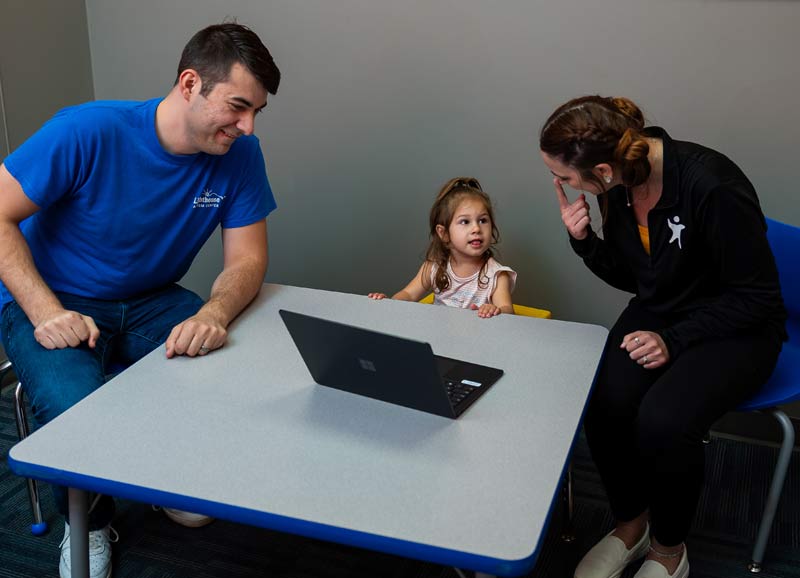
- Obsessions with objects, ideas, or desires
- Ritualistic, repetitive, or compulsive behavior patterns (e.g., sniffing, licking, flapping arms, spinning, rocking, humming, tapping)
- Fascination with rotation
- Fascination with many and varied collections of objects
- Quotes movies or video games
- Difficulty transferring skills between tasks or transitioning from one activity to another
- Portrays signs of perfectionism in certain areas
- Unusual or abnormal expression of frustration
- Compulsively fixes, touches, or rearranges objects
- Slowed gross motor skills compared to peers (e.g., riding a bike, skating, running)
- Slowed fine motor skills compared to peers (e.g., writing, tying shoes, using scissors)
- Lack of concern for personal hygiene (e.g., brushing hair or teeth, or bathing)
- Inability to perceive potentially dangerous situations
- Extreme fear (phobia) for no apparent reason
- Verbal outbursts or unexpected actions (e.g., running into the street)
- Difficulty understanding or sensing time
- Difficulty taking turns
- Causes injury to self (biting, banging head, slapping)
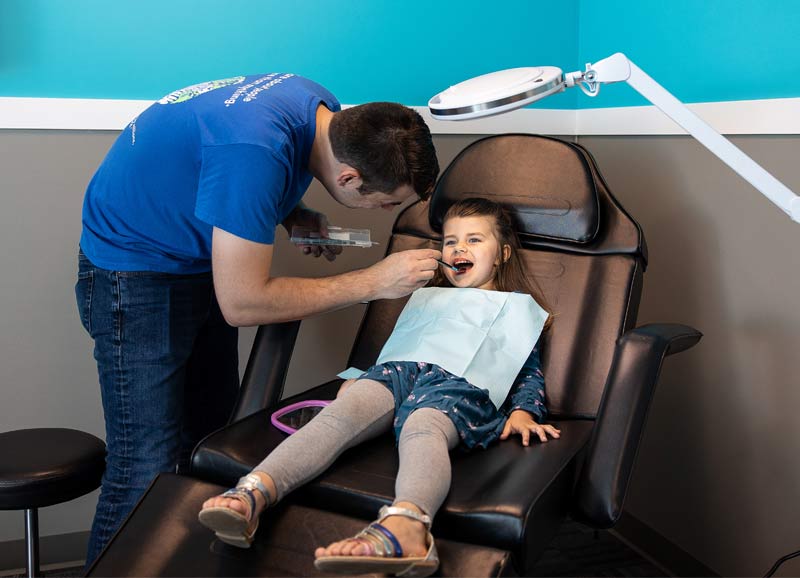
- Sensitivity or lack of sensitivity to sounds, textures (touch), tastes, smells, or light
- Difficulty with loud or sudden sounds
- Unusually high or low pain tolerance
- Intolerance to certain food textures, colors or the way they are presented on the plate (one food can’t touch another)
- Inappropriate self-touching in public situations
- Attachment to comfort items (blankets, teddy, rock, string)
- Laughs, cries, or throws a tantrum without cause or reason
- Uncomfortable with or resists change in the environment (people, places, objects)
- May have prolonged reactions to emotional incidents (e.g., distraught all day after a morning incident)
- May have extremely brief emotional reactions or rapidly changing emotions
- Becomes overwhelmed with too much verbal direction
- Tunes out or breaks down when reprimanded
- Calmed by external stimulation, such as a soothing sound, skin brushing or gently applied pressure (e.g., rolled in a blanket)
- May need to be left alone to release tension and frustration
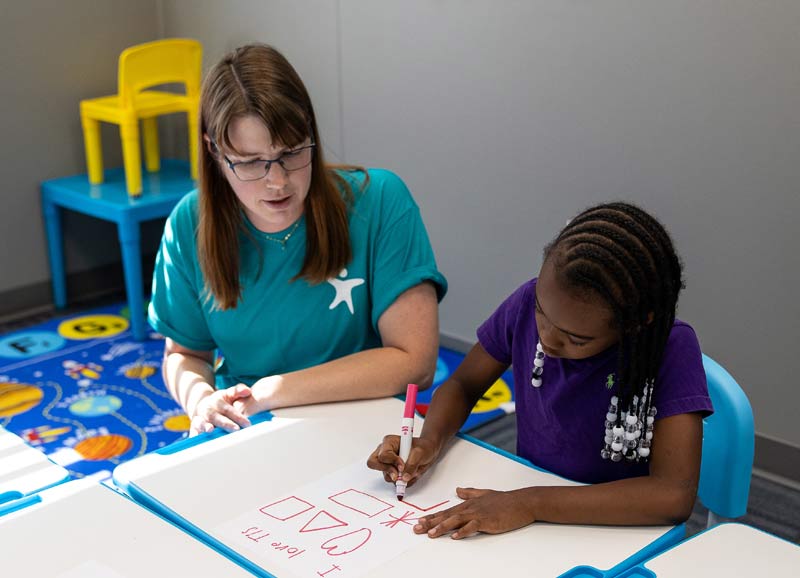
- Exceptionally high skills in some areas and very low in others
- Excellent rote memory in some areas
- Difficulty with reading comprehension (can quote an answer, but unable to predict, summarize or find symbolism)
- Difficulty with fine motor activities (coloring, printing, scissors, gluing)
- Short attention span for most lessons
- Resistance or inability to follow directions
- Difficulty transitioning from one activity to another in school

- Walks on toes
- Unusual gait
- Difficulty changing from one floor surface to another (carpet to wood, sidewalk to grass)
- Odd or unnatural posture (rigid or floppy)
- Difficulty moving through a space (bumps into objects or people)
- Walks without swinging arms freely
- Incontinence of bowel and/or bladder
- Constipation
- Frequent gas (flatulence, burping) or throwing up
- Appearance of hearing problems, but hearing has been checked and is fine.
- Seizure activity
- Allergies and food sensitivities
- Irregular sleep patterns
- Apparent lack of concern for personal hygiene (hair, teeth, body odors)
Diagnostic Testing for Autism
Having a child tested for autism spectrum disorder (ASD) is only something that a qualified professional will be able to do. However, knowing the signs of autism can help you decide whether or not to seek further evaluation for your child. The easiest way to be able to determine if a child should have further evaluation for autism spectrum disorder is to know the signs. Getting an early diagnosis of ASD is key to proper treatment and early intervention.
Learn More About Autism Diagnostic Testing
We are here to help. If you suspect your child may have autism, don’t wait. Learn more about the autism evaluation process now.


